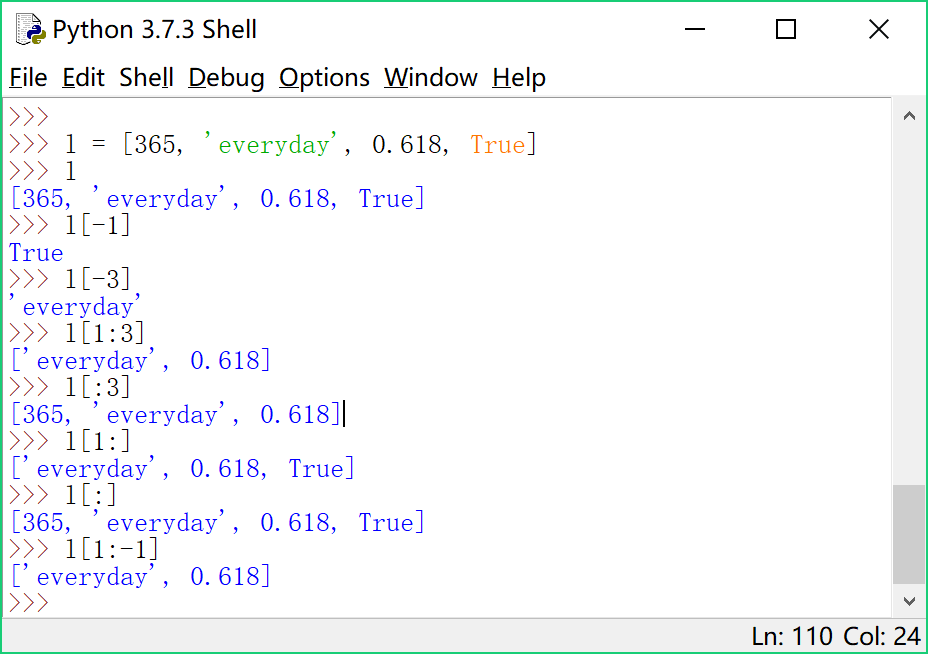【Python 第27课】list切片
list有两类常用操作:索引(index)和切片(slice)。
昨天我们说的用[]加序号访问的方法就是索引操作。
除了指定位置进行索引外,list还可以处理负数的索引。继续用昨天的例子:
l = [365, 'everyday', 0.618, True]
l[-1]表示l中的最后一个元素。
l[-3]表示倒数第3个元素。
切片操作符是在[]内提供一对可选数字,用:分割。冒号前的数表示切片的开始位置,冒号后的数字表示切片到哪里结束。同样,计数从0开始。
注意:开始位置包含在切片中,而结束位置不包括。
l[1:3]得到的结果是['everyday', 0.618]。
如果不指定第一个数,切片就从列表第一个元素开始。
如果不指定第二个数,就一直到最后一个元素结束。
都不指定,则返回整个列表。
l[:3]
l[1:]
l[:]注意:不管是返回一部分,还是整个列表,都是一个新的对象,与不影响原来的列表。
同索引一样,切片中的数字也可以使用负数。比如:
l[1:-1]
得到['everyday', 0.618]

#==== 点球小游戏 ====#
昨天有了一次罚球的过程,今天我就让它循环5次,并且记录下得分。先不判断胜负。
用score_you表示你的得分,score_com表示电脑得分。开始都为0,每进一球就加1。
from random import choice
score_you = 0
score_com = 0
direction = ['left', 'center', 'right']
for i in range(5):
print ('==== Round %d - You Kick! ====' % (i+1))
print ('Choose one side to shoot:')
print ('left, center, right')
you = input()
print ('You kicked ' + you)
com = choice(direction)
print ('Computer saved ' + com)
if you != com:
print ('Goal!')
score_you += 1
else:
print ('Oops...')
print ('Score: %d(you) - %d(com)\n' % (score_you, score_com))
print ('==== Round %d - You Save! ====' % (i+1))
print ('Choose one side to save:')
print ('left, center, right')
you = input()
print ('You saved ' + you)
com = choice(direction)
print ('Computer kicked ' + com)
if you == com:
print ('Saved!')
else:
print ('Oops...')
score_com += 1
print ('Score: %d(you) - %d(com)\n' % (score_you, score_com))
这段代码里有两段相似度很高,想想是不是可以有办法可以用个函数把它们分离出来。
